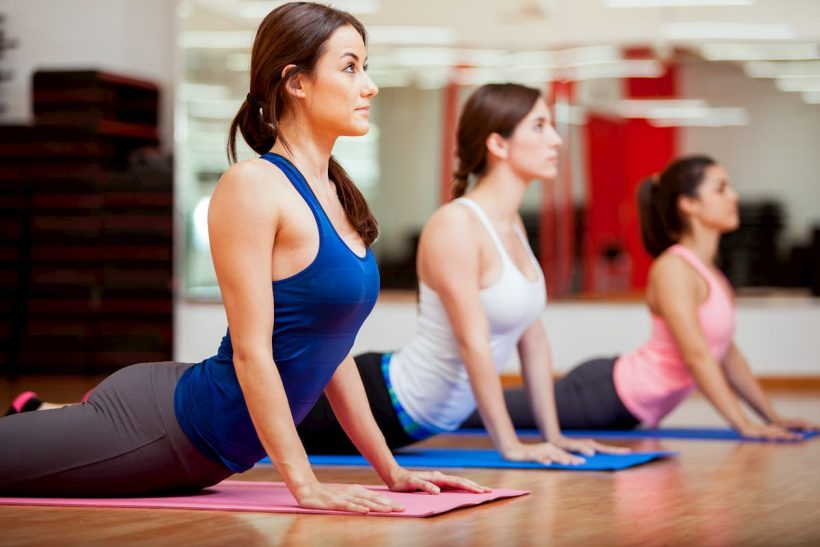Yoga poses for back pain
Look around you and observe the result of our modern world, you will see bent people to whom prolonged sitting at work or behind the wheel of a car offered the worst: bad posture!
Poor posture can lead to serious problems such as back pain, cardiovascular problems, digestive problems, changes in the curve of the spine, etc.
Fortunately, nothing is irreversible, and the power of Yoga will help to bring back some flexibility to a numb body, while realigning the posture.
The poses I have selected here will help you counteract this unfortunate tendency to slouch, while straightening your back and toning the muscles responsible for good posture and strengthening your sheathing.
Yoga poses back pain
Among all yoga asanas, there is one category that will be of particular interest to us, the so-called "open heart" postures that offer excellent results. You can practice each of these poses individually, or combine them to offer you a short session to reverse the effects of a sedentary lifestyle.
1. POSTURE OF THE MOUNTAIN
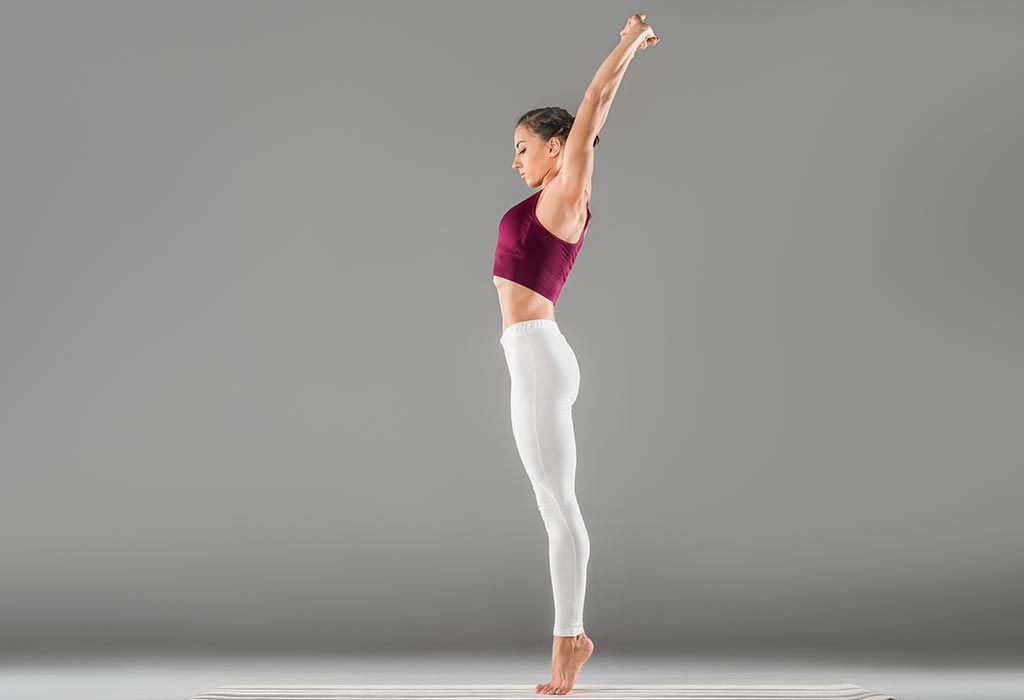
Beneath her false airs of simplistic posture, Tadasana is the very embodiment of good posture, as she teaches you to feel when your body is in perfect vertical alignment. In the end, it is quite complex and requires practice to be well executed.
To realize it :
• Standing with your feet spread out the width of the pool, imagine your feet rooting on the mat and in the ground, pushing well on the points of contact.
• Your knees are flexible and your legs are active. You are now a mountain, with a very stable foundation and a summit (your skull) that rises to the maximum, the spine is well stretched.
• Your shoulders are relaxed, away from your ears. Your abdominal strap is well engaged. No tension in the buttocks. The arms are aligned along the body.
• Breathe deeply, keeping your chin parallel to the ground throughout the pose. Feel all parts of the body.
At first, you may tend to overcompensate by pulling your shoulders too far back and pushing your chest out too much. This is not the purpose of the pose: it is rather to find a neutral position where you are not leaning forward or backward and in which you feel perfectly symmetrical and anchored in the ground.
2. LAYING OF THE TREE
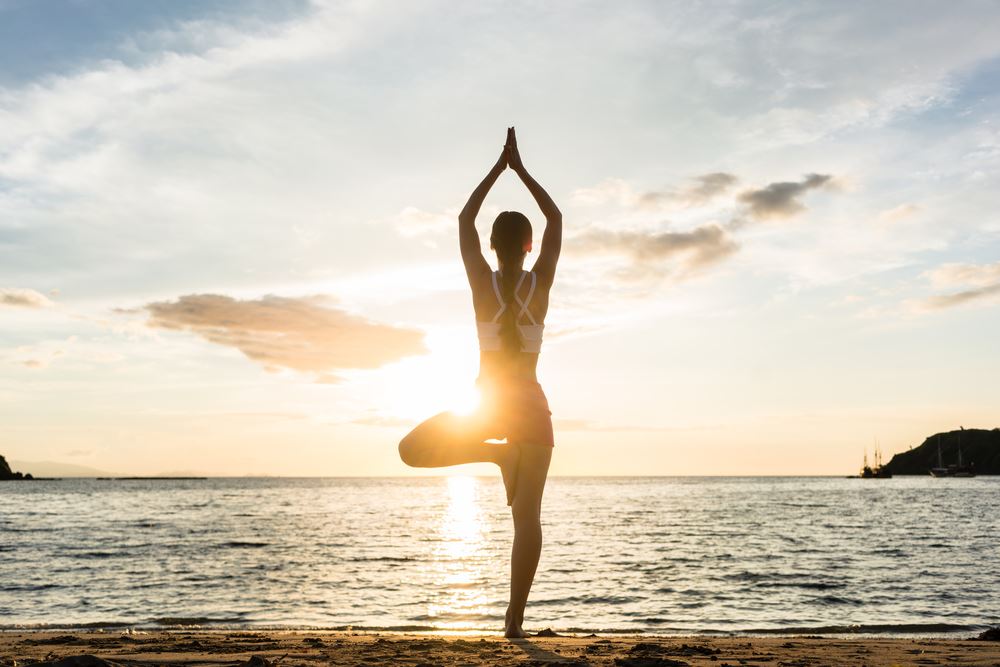
Here is a pose that forces you to adopt a good posture in order to reach a state of balance and concentration.
To realize it :
• Put yourself in the Tadasana position that we have just seen and then anchor all the weight of the body towards the left foot while lifting the right foot (the right knee bends and opens outwards, the pelvis remains straight and does not turn).
• The right foot is then positioned either at the level of the left ankle, the left knee or the inside of the left thigh. As for the hands, they are in prayer, you can raise them to heaven by opening your chest.
• Set a point in front of you to hold balance and hold while breathing deeply (visualize that you are a tree with roots deep in the earth).
• Then work the tree on the other side to ensure symmetry.
3. COW/CAT POSTURE
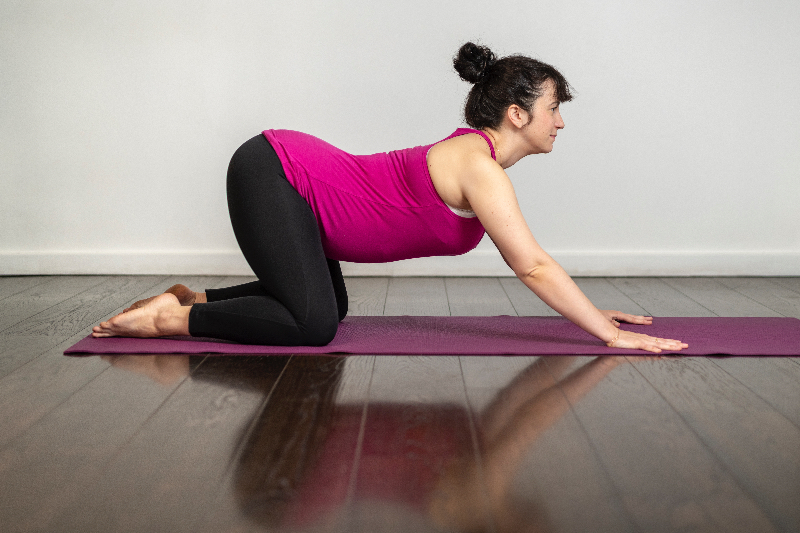
To develop good posture, you need to know what neutral (the natural curvature of the spine) is, and this posture can help you do so. As you move your spine from flexion (cat posture) to extension (cow posture), passing through the middle each time, you will learn to judge this neutral position more accurately. Moreover this asana is very good to soften and strengthen the back while warming up the spine.
To realize it :
• we begin the movement by the posture of the table, knees and fingers on the ground (the fingers are spread out a maximum and anchored in the carpet), wrists at the level of the shoulders, knees at the level of the hips, separated by the width of the pelvis. The nape of the neck is well extended.
• Push back the floor with your feet and hands, engage the abs and rock the pelvis backwards a little.
• From there and by breathing in, dig the back to mount the coccyx and the top of the skull to take the cow's posture.
• Then on exhalation, one rolls from the coccyx to round the back to the top of the skull, like a cat. When exhaling, turn the back with the chin and pelvis tucked in to be in the cat position.
• Then repeat.
4. UPSIDE DOWN DOG
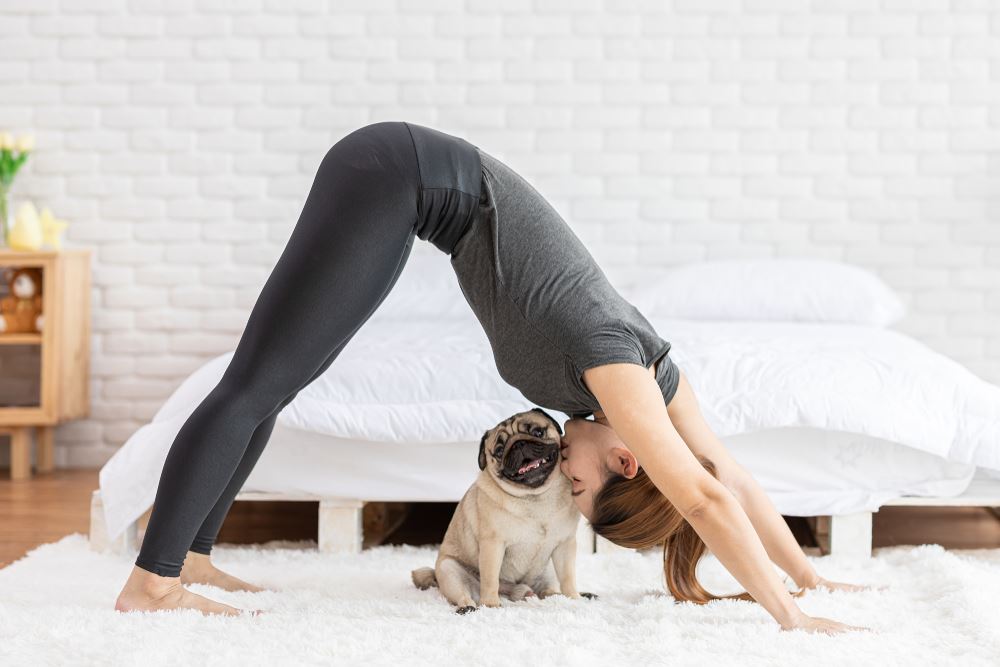
Strong posture can only be achieved with strong and flexible muscles, and guess which posture can actively help us achieve it? That's right, the upside down dog, a real pillar of yoga classes (not for nothing is it one of the very first poses we learn). The head down dog will strengthen the arms, shoulders and abdomen, while stretching the hamstrings, back, chest and shoulders.
To realize it :
• begin by putting you in the child's posture (kneeling with the width of the pelvis, the buttocks on the heels) then you will look far ahead with the hands (placed on the ground with the forehead).
• from there turn the toes over and raise the thighs to the stomach while pushing the ground with the palms of the hands and raising the pins (those pointed bones of the buttocks) and bringing the back of the knees towards the back of the room (if possible, the heels rest on the ground).
• You can alternately bend one knee, then the other (as long as the back is straight and stretched). The head is relaxed and one thinks to breathe well throughout the movement. Breathe to support the posture.
5. COBRA POSTURE
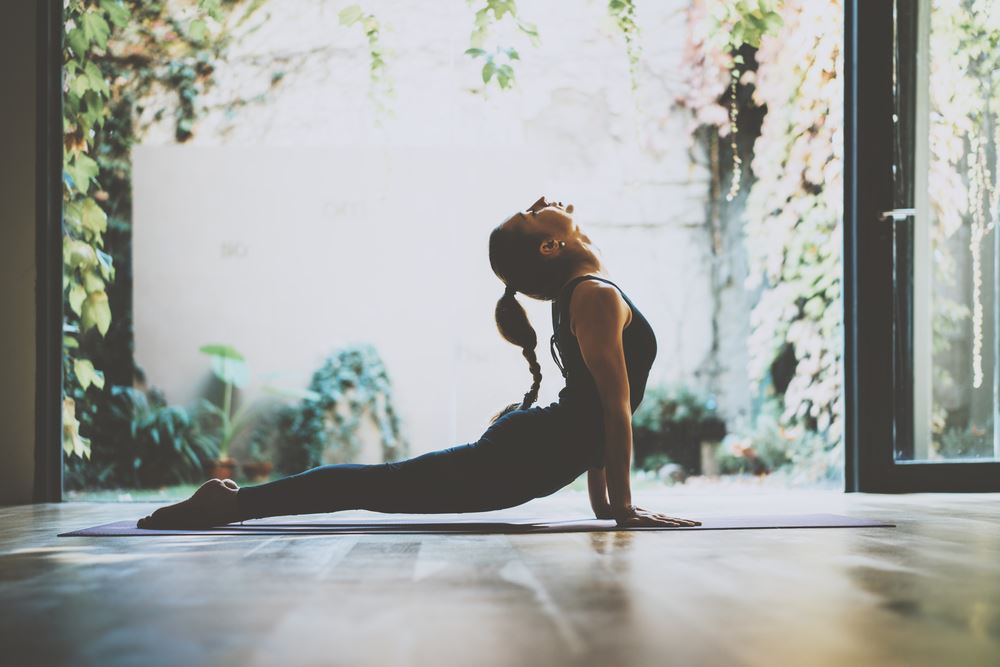
The posture of the Cobra will also allow you to strengthen your back and contribute to a better posture (in addition to helping digestion). Note that the Cobra and the head-up dog are two very distinct postures, in the latter, all the weight of the body rests on the palms of the hands.
To realize it :
• Lying on your stomach with your feet together, your hands are at the level of your shoulders with your fingers flat and your forehead on the ground. Stretch your spine to the maximum.
• the shoulder blades are well tightened and the elbows stuck to the sides. Slide your chin as far as possible towards the front of the mat to begin to straighten up naturally (you are not yet pushing with your arms, only the lumbar vertebrae are working).
• By breathing in, the spine is unrolled by pushing on the hands without lifting the shoulders. Keep the nape of the neck neutral, well stretched out and the navel tucked in to protect the vertebrae of the lower back. Hold for 15 to 30 seconds or hold for three to five breaths.
• Put your cheek on the ground, recover, then resume.
6. ARC POSITION
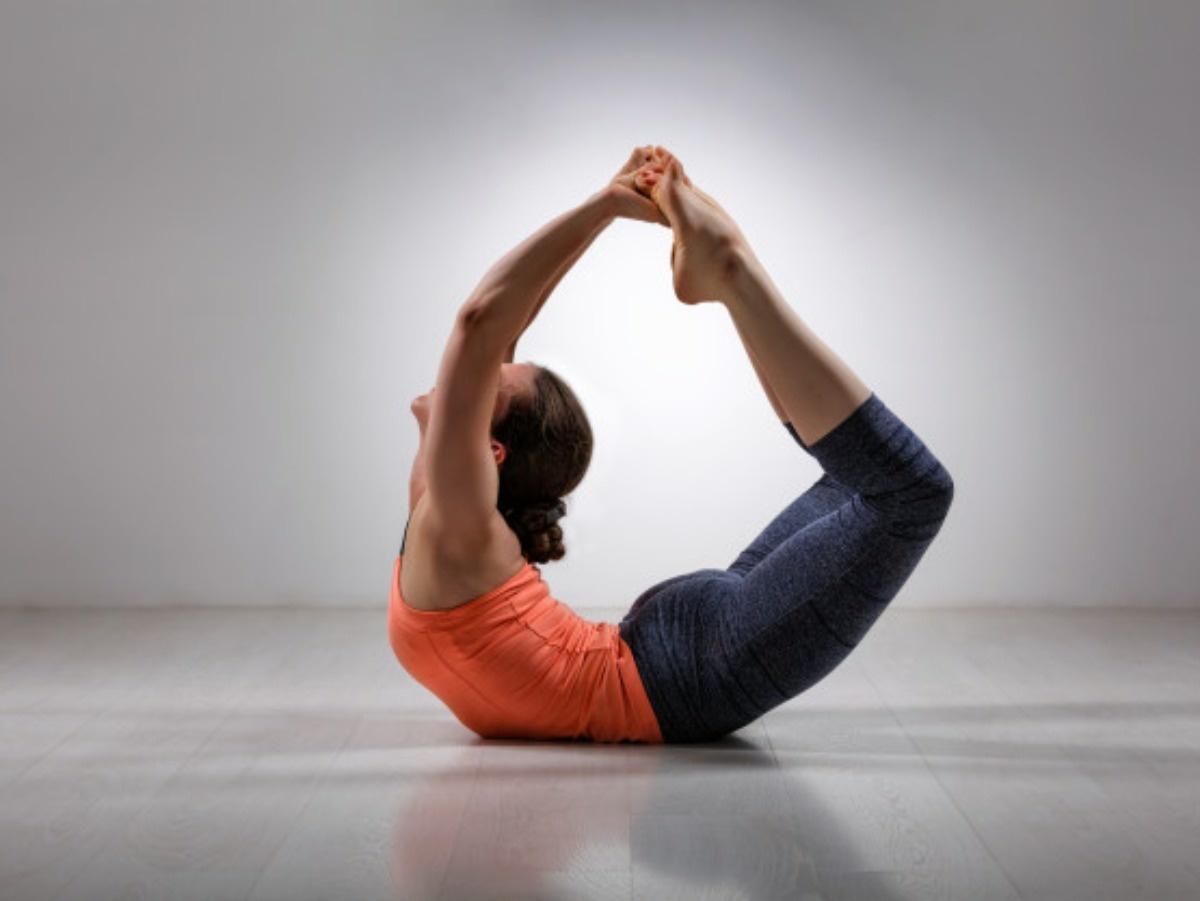
The bow is a reference in the "heart opening" category. When practiced correctly, it provides a deep stretching of the back and chest (like a bowstring). It is also an excellent posture to strengthen the abdominal sheathing.
To realize it :
• Lying on the belly, the pubis is stuck against the carpet, the palms of the hands rest on the ground, the forehead or the chin are also plated on the ground. The buttocks are toned to protect the lumbar vertebrae.
• bring the heels towards the buttocks so that you can seize the outside of your ankles (outstretched arms).
• Now move your feet backwards towards the ceiling. Inhale and exhale through your nose while observing slight rocking movements.
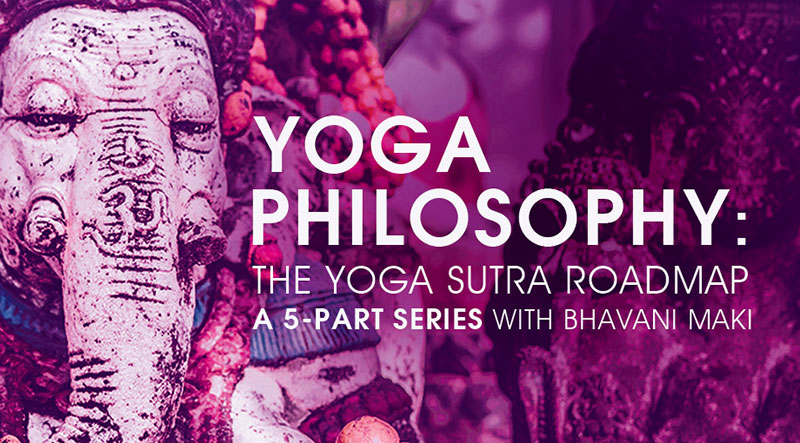
7. BRIDGE POSTURE
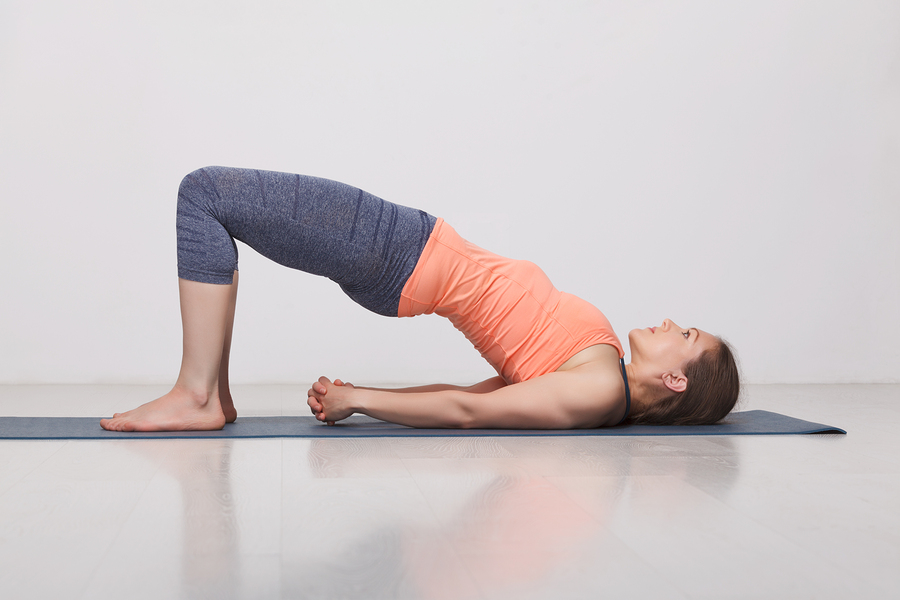
Here is a posture that will ensure that we open our chest and shoulders, two areas that are often stiff in people with poor posture. It will also strengthen the back, while providing the spine with better support.
To realize it :
• Start lying on your back, palms facing the mat, feet flat on the mat and close to your buttocks, knees bent.
• As you breathe in, lift your hips toward the ceiling by pushing on all corners of your feet evenly (not just your heels) and with the palms/fingers of your hands pressing down on the mat. The movement should be slow and in control, the palms of the hands can open in time to face the sky this time.
• You are now in the deck position, take a few deep breaths (note that no pressure is applied to your neck). The coccyx should be pointing towards the back of your knees.
• Breathe out as you come down, always gently.
8. LAYING OF THE BOARD
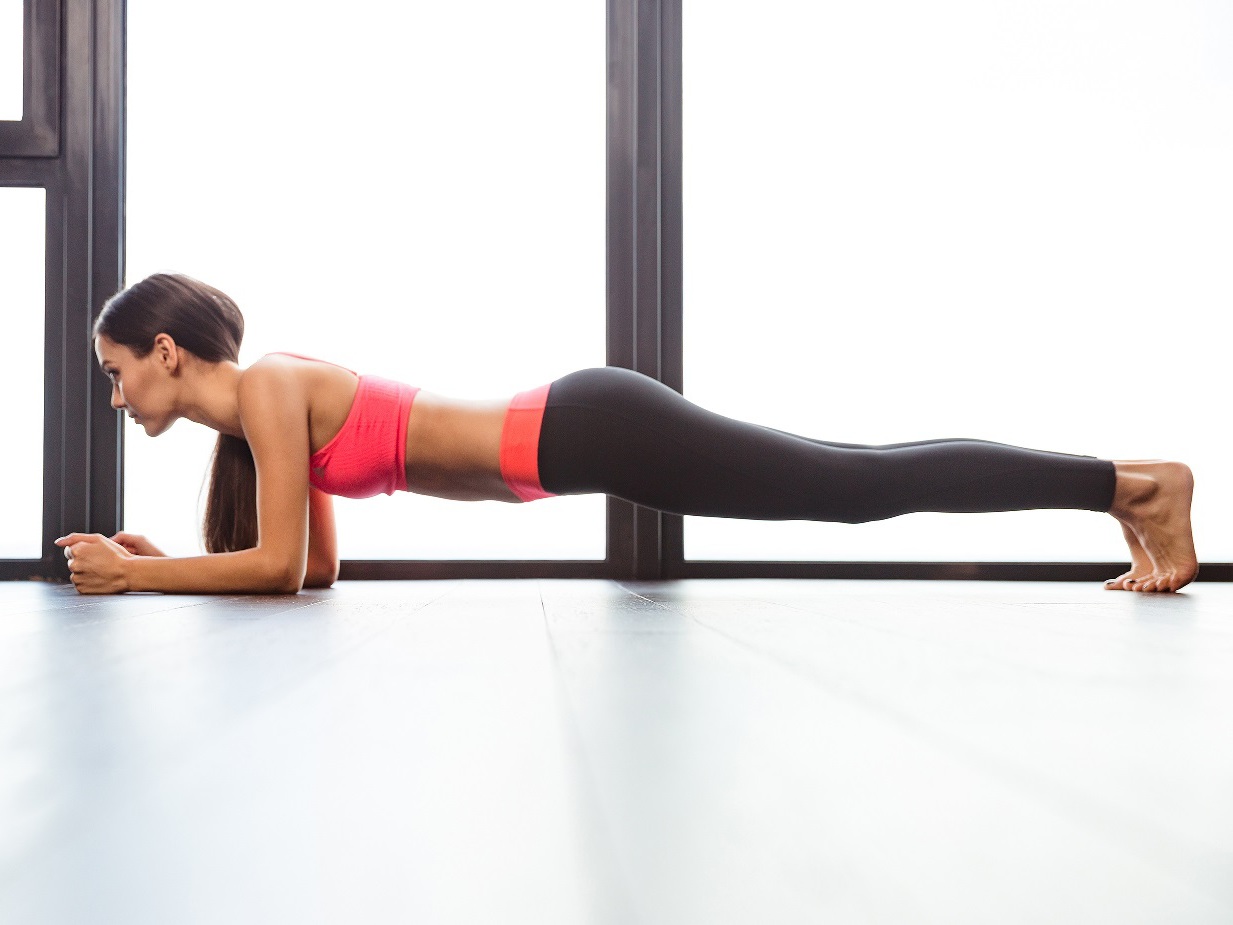
What better posture for the abdominal strap than that of the board? This asana is certainly not part of our "open-heart" postures, but it has the merit of toning the abdomen and its deep muscles, guaranteeing a good posture. Although it seems simple, it will require practice to have a perfect and well aligned board.
To realize it :
• Start on all four legs (in table position) with palms firmly planted on the floor and shoulder level. Knees underneath directly below the hips.
• Stretch one by one the legs backwards, the feet are spread out to the width of the pelvis (or tighter for a better sheathing). Stretch well with the top of the skull forward and the heels backward. The spine is well aligned with the nape of the neck.
• Keep your abdominal muscles engaged, your body should form a straight line from the ankles to the head.
• Hold this posture for 15 to 30 seconds, then release the pose by dropping your knees on the floor when exhaling.
• Repeat this board posture 5 times. Notes: If the exercise is too difficult, choose a version with knees on the floor.
9. FISH POSTURE
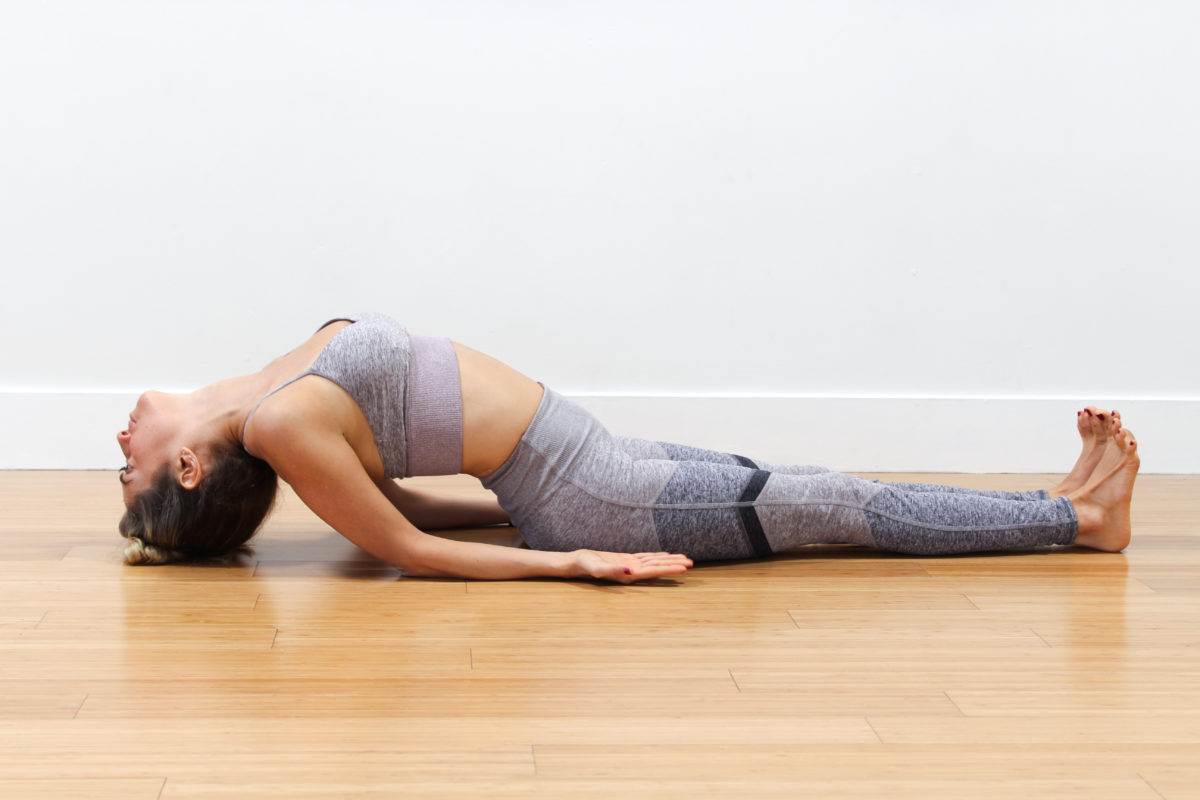
This posture is excellent for stretching and relaxing the spine, and once you are able to let go, you may not want to come out! Moreover, the fish pose allows you to fully open the rib cage.
To realize it :
• Lie down on the floor, with your arms dangling on either side of your body, feet relaxed or pointed.
• Place your palms of hands against the carpet, under your buttocks, your elbows will come closer together, the shoulders go down and the chest goes up.
• Inhale and slide while opening the rib cage, the top of the skull goes against the ground (you push the ground with your palms and elbows).
• Remember to retract the navel and tighten the shoulder blades to protect the lumbar region.
• Breathe deeply.
10. LAYING THE CAMEL
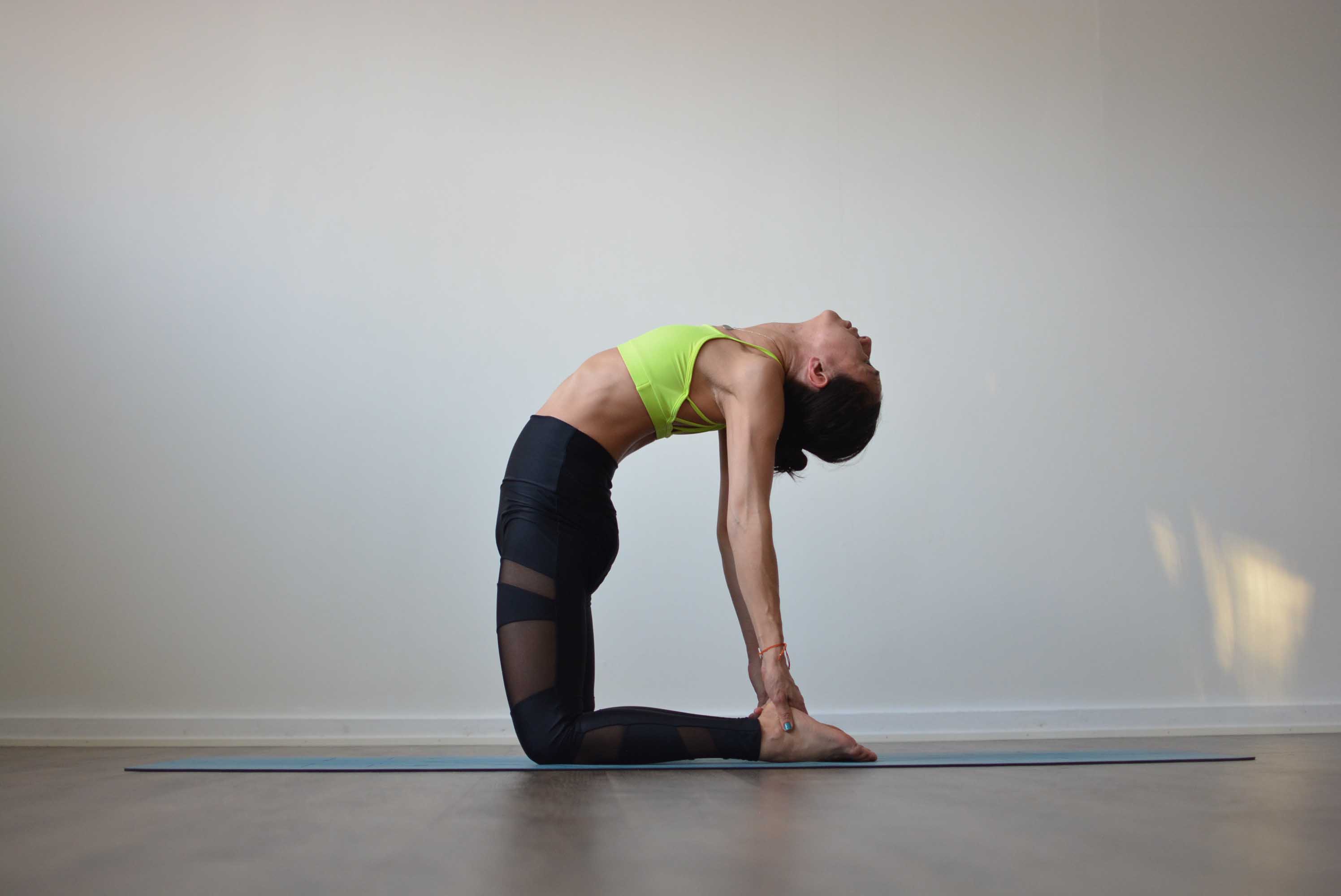
This posture belongs to our category of asanas that "opens the heart", it will know how to counter the harmful effects of a day spent sitting at the office.
To realize it :
• Start on your knees, the buttocks do not rest on the heels, you are straight (right angle at your knees) and the calves are parallel. The pelvis makes a retroversion, that is to say that the pelvic bone is forward and downward which will activate the buttocks while protecting the lumbar vertebrae.
• Hands on hips, shoulder blades tightened, chin towards the sternum, we breathe, this is the first version of the camel.
• if you feel well, open the rib cage and come and place one hand, then the other on your heels.
• finally, you can relax your head (but not completely at the risk of placing too much tension on the cervicals) so that your gaze is directed towards the ceiling.
11. LEGS AGAINST THE WALL
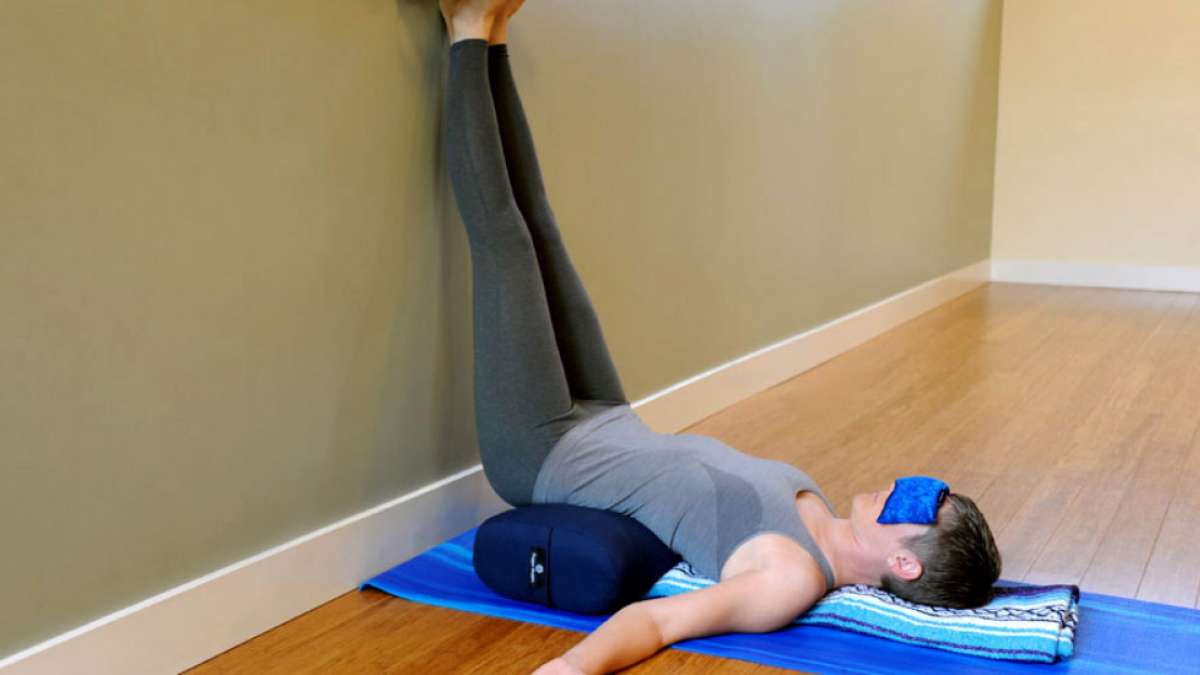
The Karani Viparita, which consists of putting your legs up in the air, concretely is not only good against stress, but it helps the heart to efficiently distribute blood throughout the body, while reducing inflammation in the legs.
To realize it :
• Sit close to the wall (if you wish, you can even do without it as in the video above).
• Lay down with your knees bent, breathe in and move your legs up and wedge them against the wall, with your feet facing the ceiling (the space with the wall should be kept to a minimum).
• Your hands can rest on your stomach, on your hips, or on the floor, palms facing the ceiling.
• Close your eyes and relax.

Latest tips for good posture on a daily basis
It is more than essential to take great care of your posture on a daily basis. Our modern lifestyles tend to make us sedentary and spend most of our time sitting or lying down, let's reverse the catastrophic effects of these prolonged stations (change your posture regularly)!
The body needs movement, you can give it movement with the postures we have just seen and by making sure to move more every day. Add walking and cycling to your lifestyle, not to mention sports.
You don't have to take bad posture for granted, there's always something to do and it's never too late.
If you have low back pain, go see a doctor without further delay, who will be able to refer you to a physiotherapist to work on muscle strengthening, to an osteopath for a postural imbalance assessment and possibly to a podiatrist for the fabrication of orthopedic inserts. Don't make the mistake of getting a posture straightener before you have really established a treatment plan with your health care professional.
Beyond that, remember to stand up straight when you work (make your workstation as ergonomic as possible) or in your everyday movements, also think about taking breaks from work to stretch and walk. Just get into the habit of asking yourself this question during the course of your day: "Do I stand up straight?". (even if it means putting a timer on).
Simple things, but which we have lost the habit of doing.


